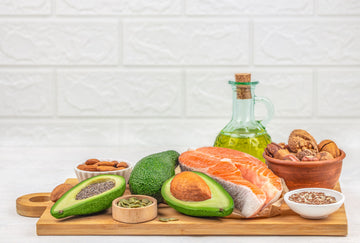The world of sports and fitness is full of information - but unfortunately not all of it is correct. Many so-called "fitness wisdoms" persist, even though they have long been disproven. These myths can not only lead to frustration, but also hinder training success or even endanger your health. In this article, we take a look at the most common fitness myths and explain what is really behind them.
Myth 1: “Only those who sweat train properly”
Truth: Sweat is not an indicator of the effectiveness of a workout. Sweating primarily serves to regulate body temperature. How much someone sweats depends on many factors - for example, the individual metabolism, the outside temperature or clothing. There are people who sweat very little even during intense exercise, and others who sweat a lot even during a light warm-up. More important than the flow of sweat is the quality of the workout: good technique, the right intensity and variety.
Myth 2: “No pain, no gain”
Truth: This common saying suggests that only a workout that really hurts is effective. In fact, however, pain is a warning signal from the body that often indicates overload or incorrect technique. Muscle soreness after training is normal to a certain extent, but persistent pain or injury are clear signs that something is wrong. Good training challenges the body without overloading it. A slight burning sensation in the muscles during the last few reps is fine, but pain should be taken seriously and not ignored.
Myth 3: “Strength training makes women masculine”
Truth: Many women fear that strength training will make them look "masculine" and muscular. In fact, the hormonal differences between men and women are so great that women generally do not gain as much muscle mass as men, even with intense training. Strength training in women primarily promotes muscle definition and tone and can help shape the body and support bone health. It is an important part of a holistic fitness program and has many health benefits.
Myth 4: “Fat burning only starts after 30 minutes”
Truth: The body is constantly burning both carbohydrates and fat, regardless of how long you exercise. However, the percentage of total energy consumed by each energy source varies depending on the intensity and duration of the exercise. In fact, lower intensity exercise, such as a walk or light jog, burns more fat as a percentage, but you burn fewer calories overall than you would with a more intense workout. So it's not necessary to exercise for 30 minutes or more to burn fat - it's the overall calorie balance that matters.
Myth 5: “Sit-ups are the best way to get rid of belly fat”
Truth: You can't specifically lose fat in certain areas of your body, even though many people believe that. This myth is persistent, but sit-ups and other abdominal exercises may strengthen the abdominal muscles, but they don't specifically burn fat on the stomach. Fat loss is always holistic and depends on the overall calorie balance. A combination of strength training, endurance training and a balanced diet is the best way to reduce body fat and get a defined midsection.
Myth 6: “Cardio is the best way to lose weight”
Truth: Endurance training such as running, cycling or swimming is effective for burning calories and improving overall fitness. However, to lose weight and maintain it in the long term, it is important to also incorporate strength training into the program. Strength training helps build muscle mass, and muscles burn more calories than fat tissue even at rest. A combination of strength and endurance training is therefore most effective for reducing body fat while maintaining or building muscle mass.
Myth 7: “Protein shakes are only for bodybuilders”
Truth: Protein shakes are a practical way to meet your daily protein needs - not just for bodybuilders, but for anyone who is physically active or wants to increase their protein needs. A protein shake can help support regeneration and promote muscle building, especially after training. However, the majority of protein should be consumed through a balanced diet, as natural protein sources such as legumes, nuts, fish or meat also provide valuable nutrients.
Myth 8: “Stretching before training prevents injuries”
Truth: Static stretching before exercise was once considered a must to prevent injury. However, recent studies show that static stretching before exercise can reduce muscle strength and performance. It is better to warm up with dynamic movements that move the muscles through a full range of motion, such as easy jogging, squats or arm circles. Static stretching, on the other hand, is useful after exercise to improve flexibility and relax the muscles.
Myth 9: “More training is always better”
Truth: Many people believe that more training automatically leads to better results. However, the opposite is true: too much training can overload the body, lead to exhaustion and injury, and even slow down progress. Recovery phases are crucial for building muscle and improving performance. The body needs time to recover and get stronger. A balance between training and recovery is the key to sustainable progress.
Myth 10: “Eating in the evening makes you fat”
Truth: The time of day you eat your meals has less of an impact on weight gain than the total number of calories you consume throughout the day. What matters is your calorie balance - the ratio of energy consumed to energy expended. If you consume more calories than you burn, you will gain weight, regardless of when you eat. For people who work out late at night or stay up late, eating in the evening can actually be important to provide the body with the energy and nutrients it needs.
Conclusion
The fitness world is full of myths and half-truths that often confuse more than help. It is important to remain critical and rely on scientifically based information. Every body is different and what works for one person may not be right for another. Listen to your body, pay attention to its signals and get information from trustworthy sources. This way you can achieve your fitness goals effectively and healthily.





